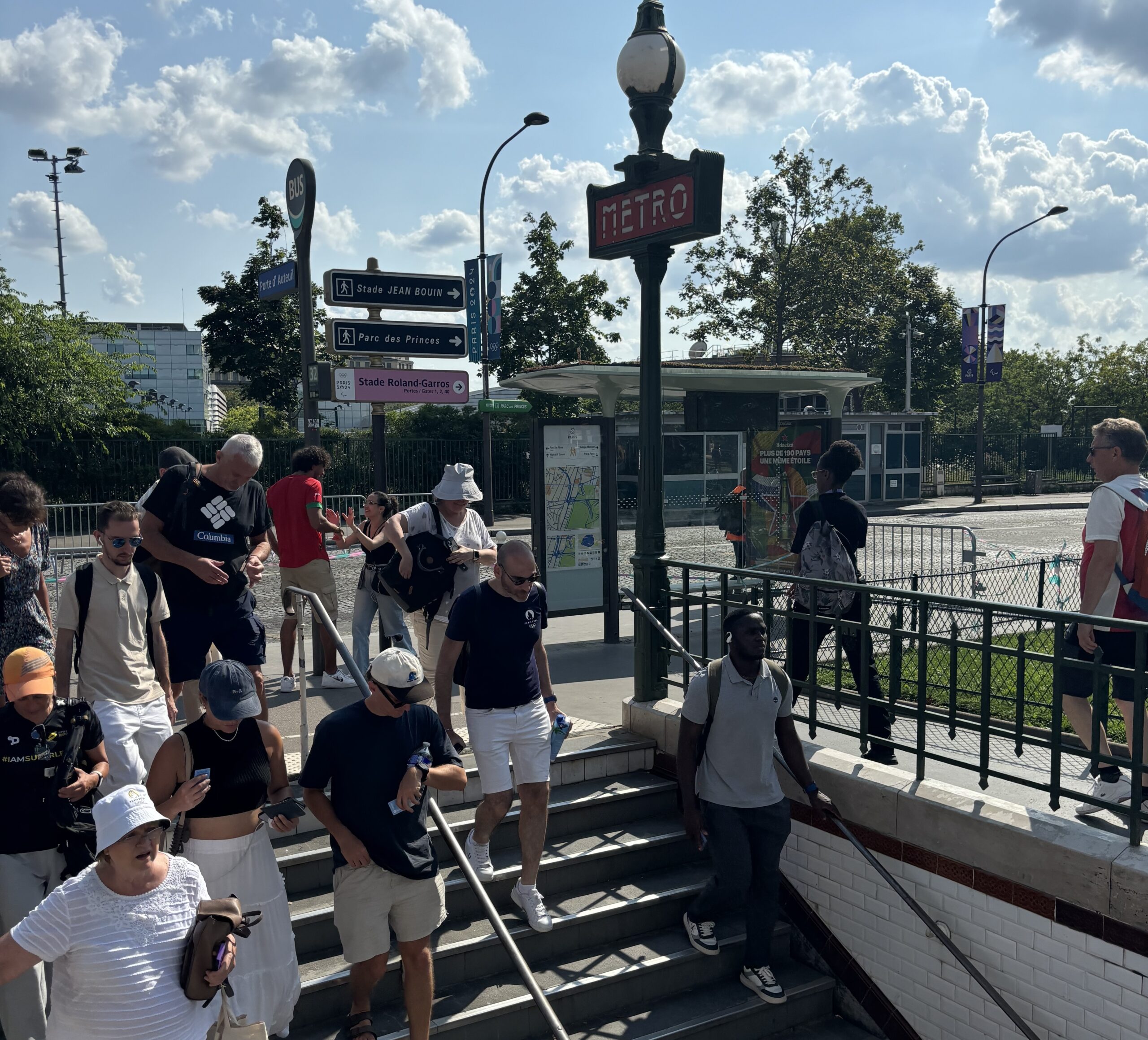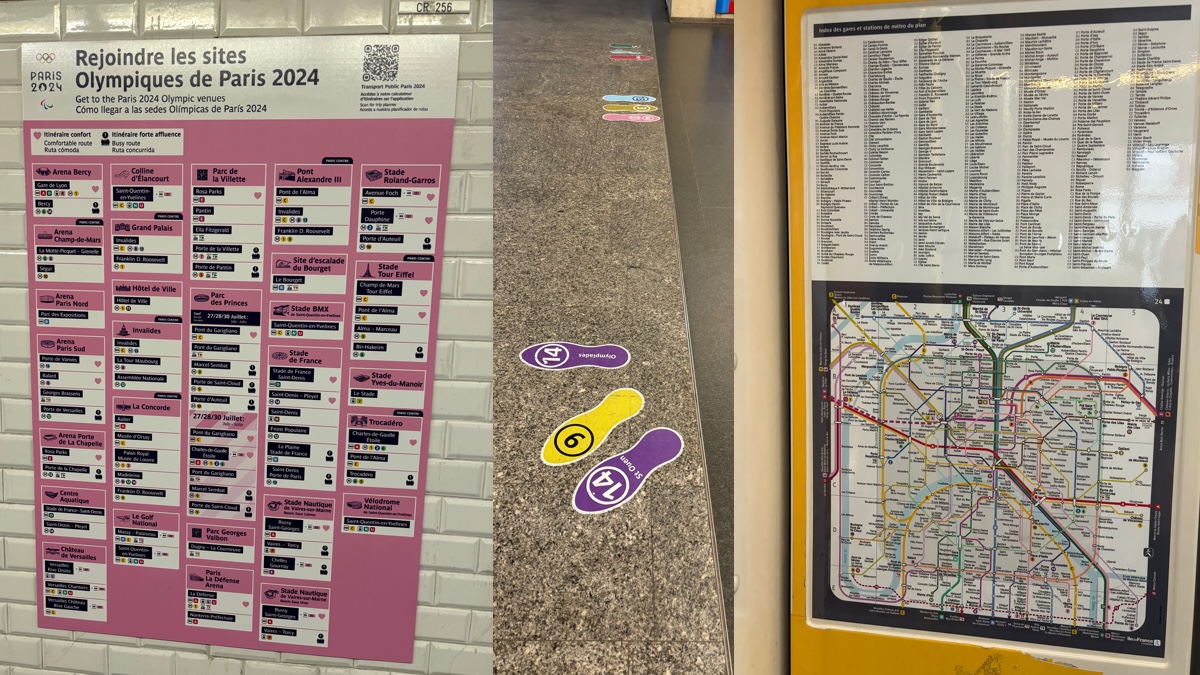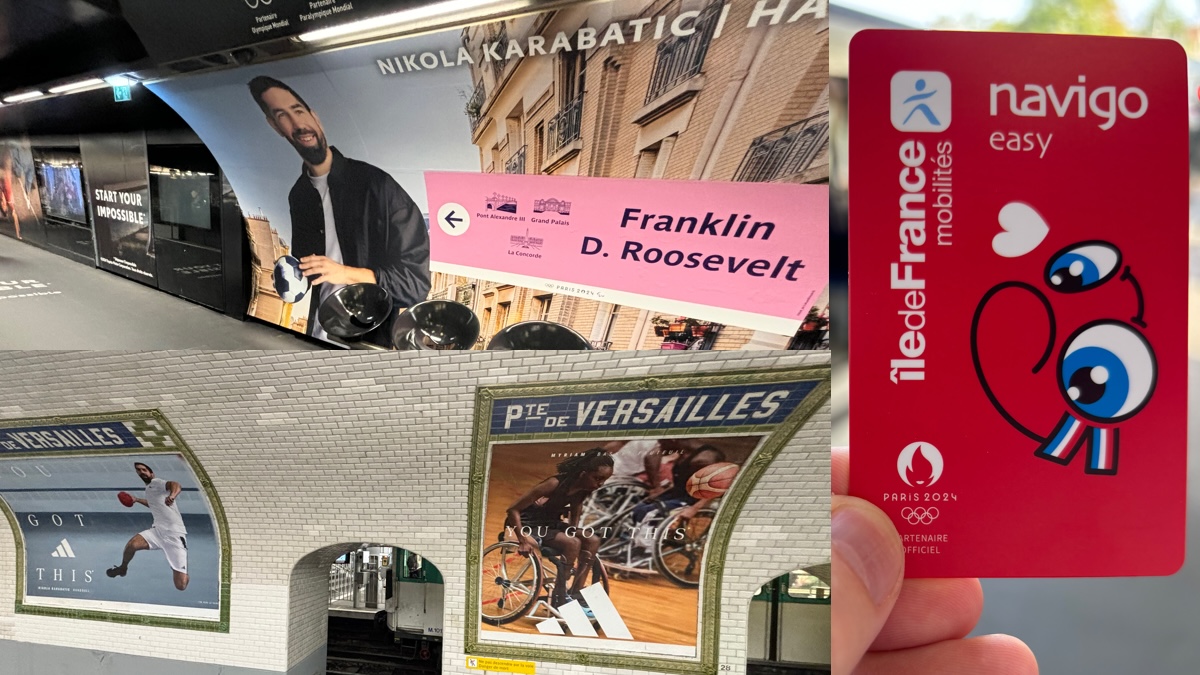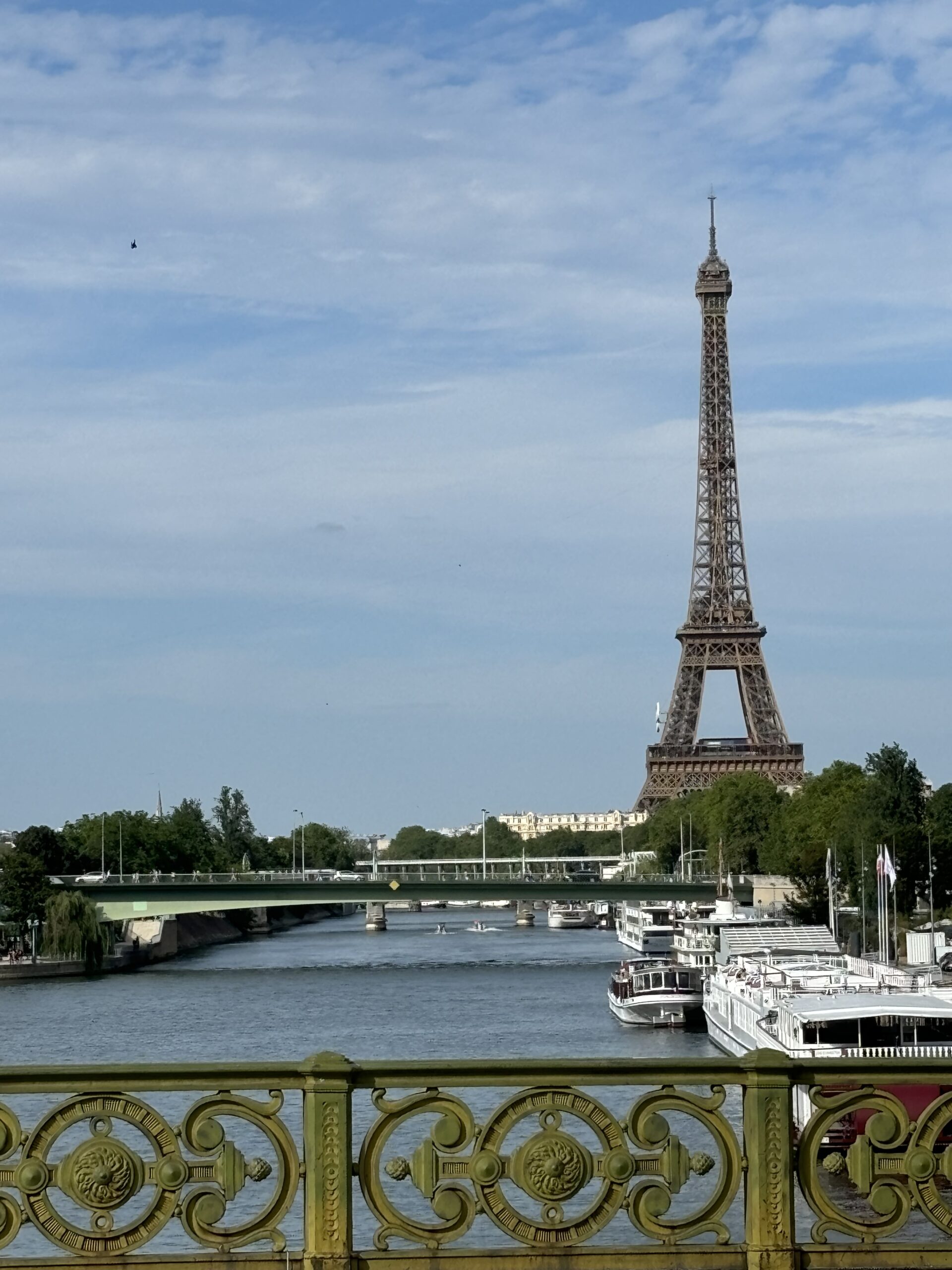
The venues that host events throughout the 2024 Olympic Summer Games in Paris have gotten so much attention — one perhaps that may not be getting as much attention is how the millions of people who bought tickets have been getting there.
The Paris Metro has over 300 lines and is second busiest metro system in Europe (only Moscow is busier). Currently, six out of 14 metro lines are fully air-conditioned and a seventh line has four air-conditioned trains out of five.
The lines run from 5:30 a.m. until 1 a.m. and in some stations, trains come every two minutes; we never waited more than 7 minutes at any point and time for a train in our travels.
Sponsored Content

Getting Around Town
There was some controversy when Paris organizers first promised free public transport would be included in event tickets but changed course and in some cases, raised the fares. In the interest of full disclosure, all media members — including SportsTravel — did get a Navigo ticket for the Games without having to pay for it.
The Metro itself was Olympic adjusted for those who were visiting from around the world with volunteers at nearly every platform and station. The stations themselves can, in some of the bigger areas, be a bit confusing the first time you walk through them although the experience gets easier over time.
In some of the stations, there was big signage indicating some of the lines to get to various venues throughout the city. In more heavily trafficked stations, there were footprint decals for those to follow along. Knowing the number of stations that would be used by visitors and how many people would be coming through each day, there were a few stations that got turned into sponsorship and branding opportunities, especially the Franklin D. Roosevelt station on one of the metro lines being taken over by Toyota.

Long Trip to Lille
Most notable among the sports that were some distance from Paris during the first week of the Games was soccer, held in a variety of stadiums mostly along the southern part of the country and sailing, which was in Marseille.
But then there was basketball in Lille, near the northern part of the country and a shorter distance from Belgium than Paris. The basketball group stage for men and women was held at Stade Pierre Mauroy, home of Ligue 1 club Lille, which is convertible to a basketball arena for 27,000 people.
With no Games-provided transport from Paris to Lille, SportsTravel took the public transport to and from the stadium for Saturday’s U.S. men group stage finale against Puerto Rico. While we went very early on Saturday morning for the game, more instructive perhaps is the way our journey back went after the game finished; rather than stick around for any postgame interviews, we left at the buzzer when fans did to get an idea of the timing.
- 7 p.m.: Shortly after the game was over, we and the tens of thousands of other attendees spilled out onto the outside concourse of the stadium and were directed by volunteers to the closest metro station, which ended up being about a 20-minute walk.
- 7:35 p.m.: After a wait to get through the outdoor queue that had formed, we got into the metro station with the next group of people allowed inside and from there, it was nine stops to Gare Lille Flanders, which took about 15 minutes overall.
- 7:50 p.m.: Back at Gare Lille Flanders, the next train back to Paris was at a separate station that was about a 10-minute walk away with some fast-food options as we walked over.
- 9 p.m.: Our train back to Paris has been loaded and is about to pull away from the station having been delayed about 10 minutes. The route is direct with no stops; our ride from Paris to Lille earlier in the day had four stops.
- 10:15 p.m.: We’re back at Gard du Nord, which is the busiest station in all of Europe. From there, we take two Paris metro rides to our hotel
- 11:15 p.m.: Back at the hotel after a journey of about four hours, which isn’t bad given the amount of walking and crowd size in Lille. For comparison, the journey by car from Lille to Paris would have been about 30-45 minutes shorter but the cost of a rental car and gas would have been almost three times as much as it was for the train ticket.
Overall Impressions
The Paris Metro likes to say there is no part of the city that doesn’t have a metro station within 500 meters of it. That may stretch the truth, but the Metro and Paris 2024’s insistence on people using it rather than cars was noticeable throughout the Games.
Paris, along with London in 2012, have set the standard for getting people from one venue to the other during the Games without relying on packed highways and traffic jams in and out of parking lots. The ability for LA28 to get people from spot to spot via public transport will be a tall task to match what Paris has done.













 Copyright © 2025 by Northstar Travel Media LLC. All Rights Reserved. 301 Route 17 N, Suite 1150, Rutherford, NJ 07070 USA | Telephone: (201) 902-2000
Copyright © 2025 by Northstar Travel Media LLC. All Rights Reserved. 301 Route 17 N, Suite 1150, Rutherford, NJ 07070 USA | Telephone: (201) 902-2000